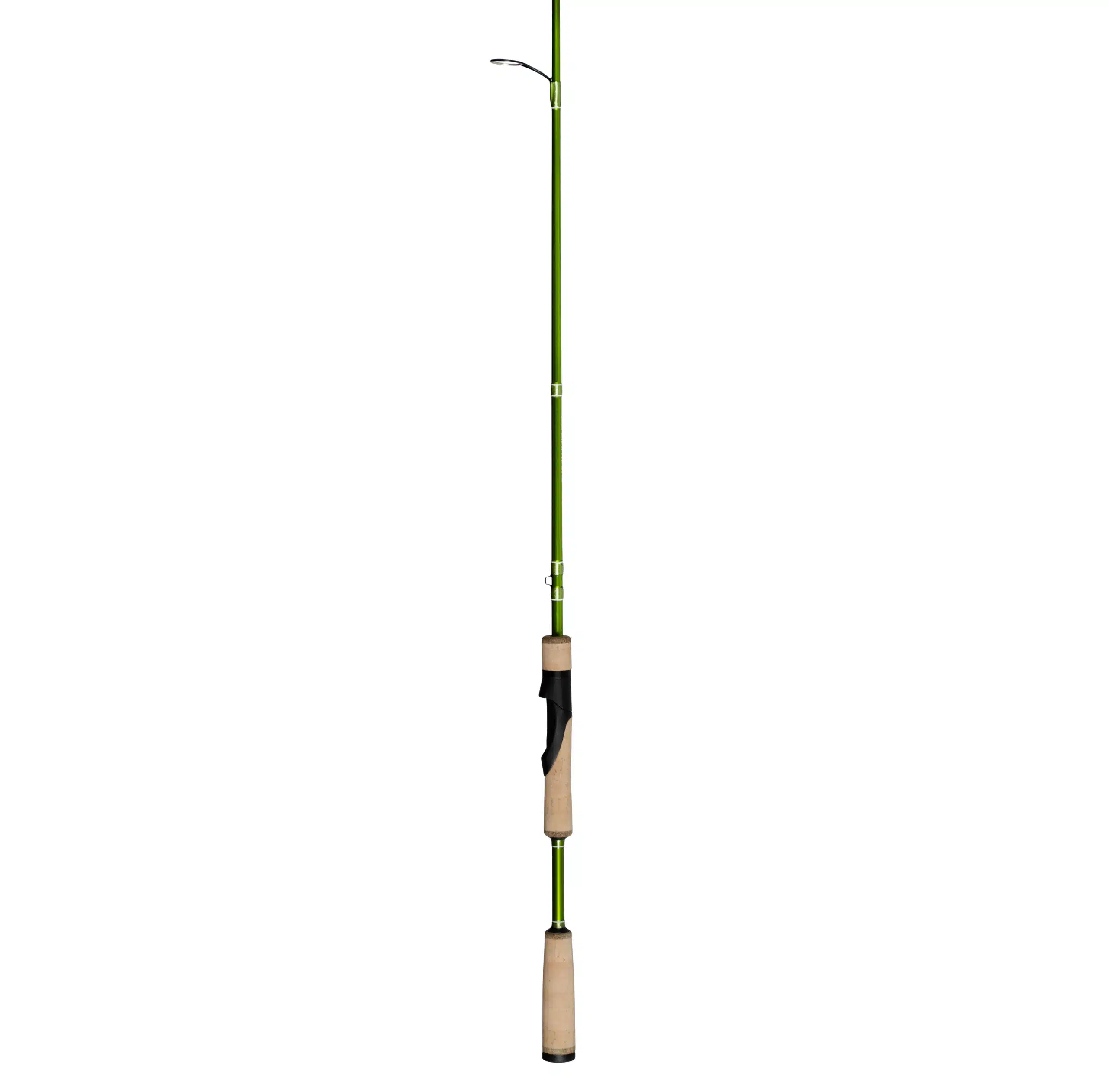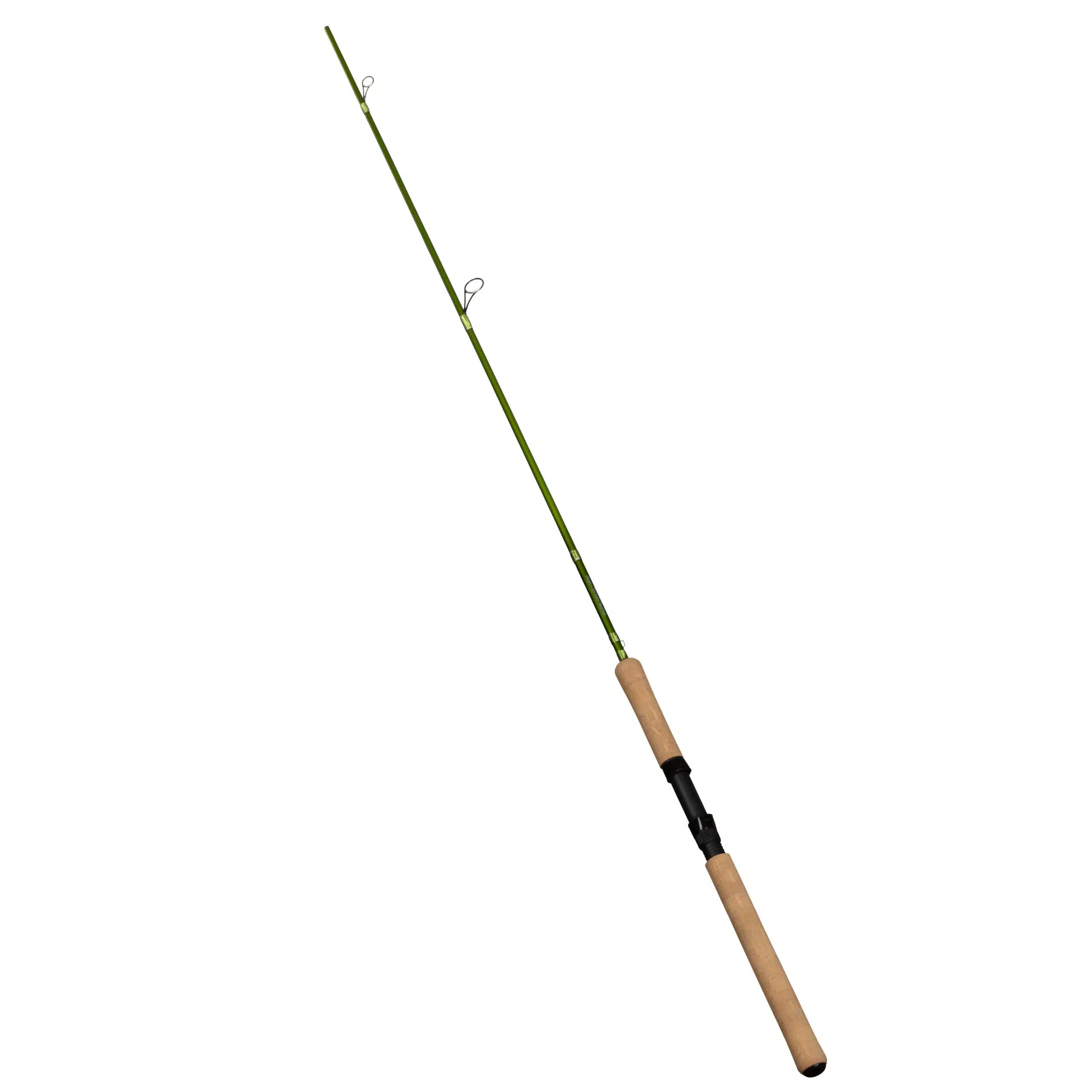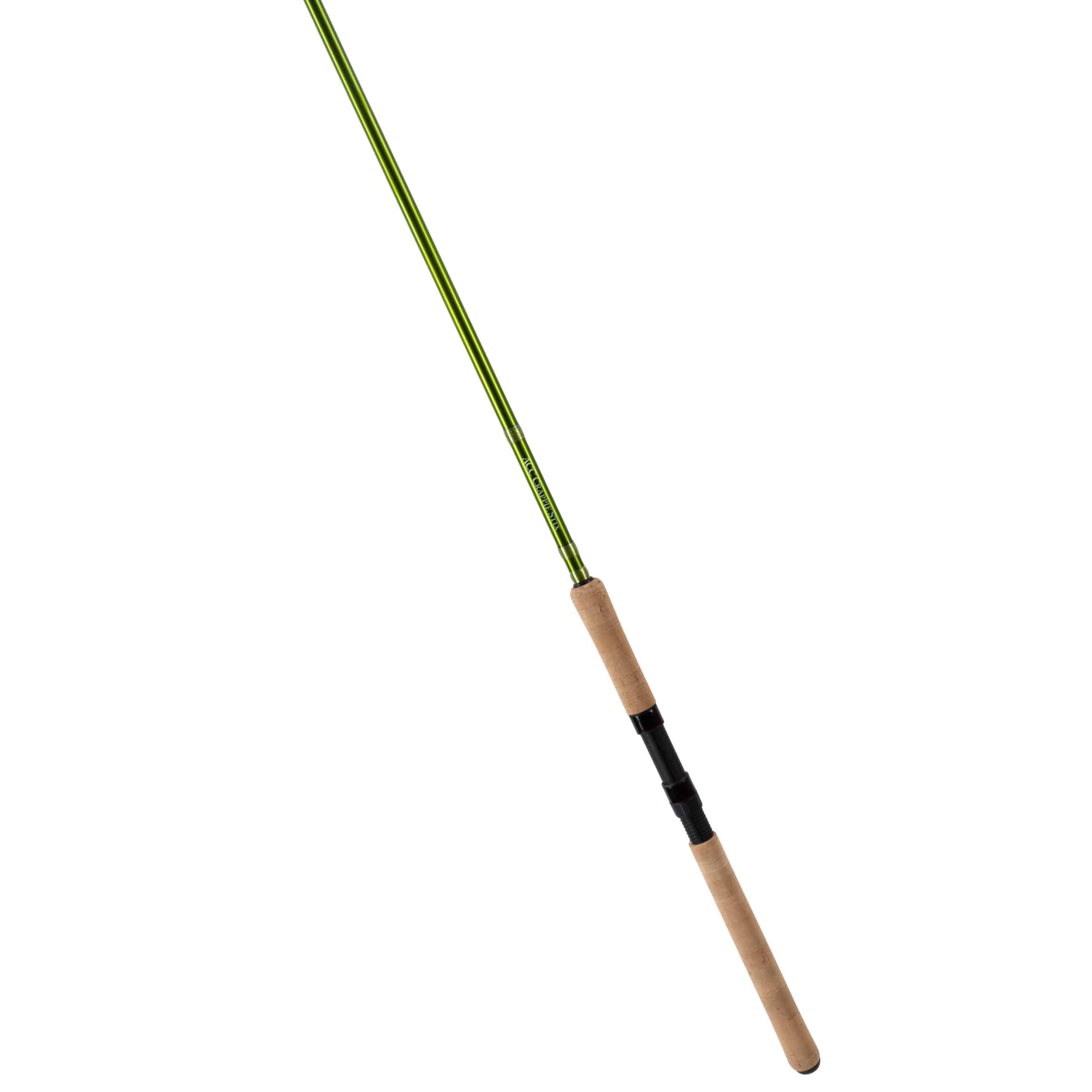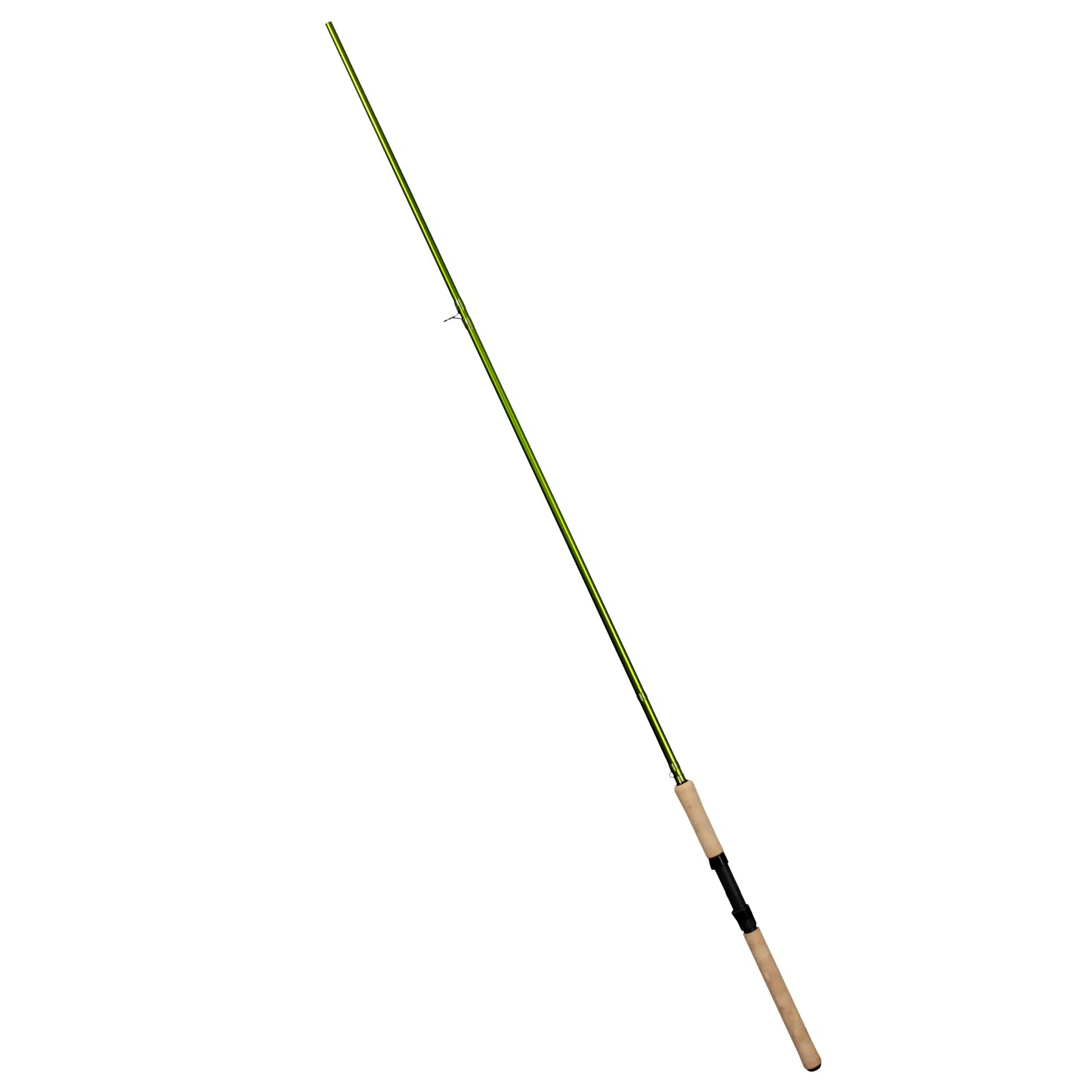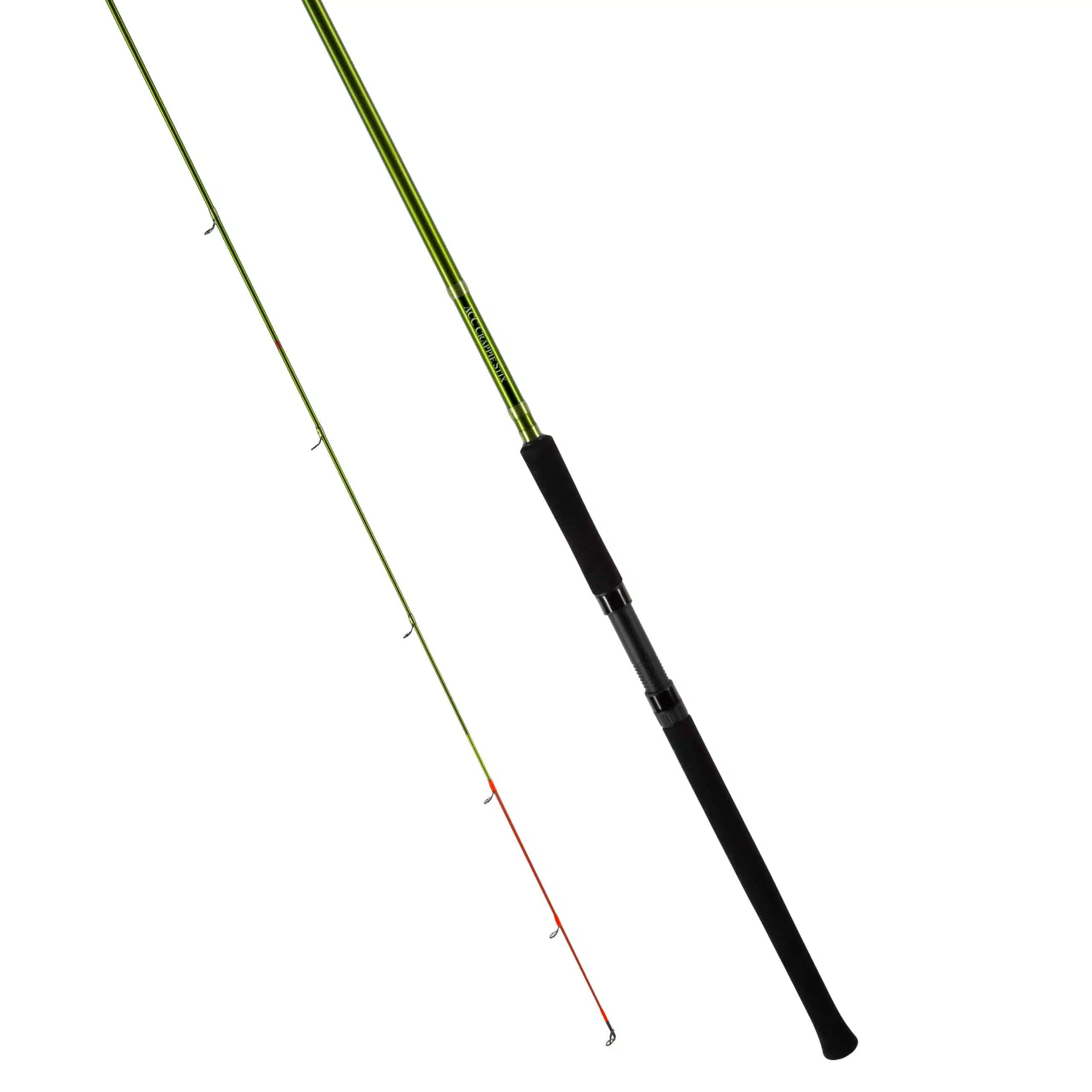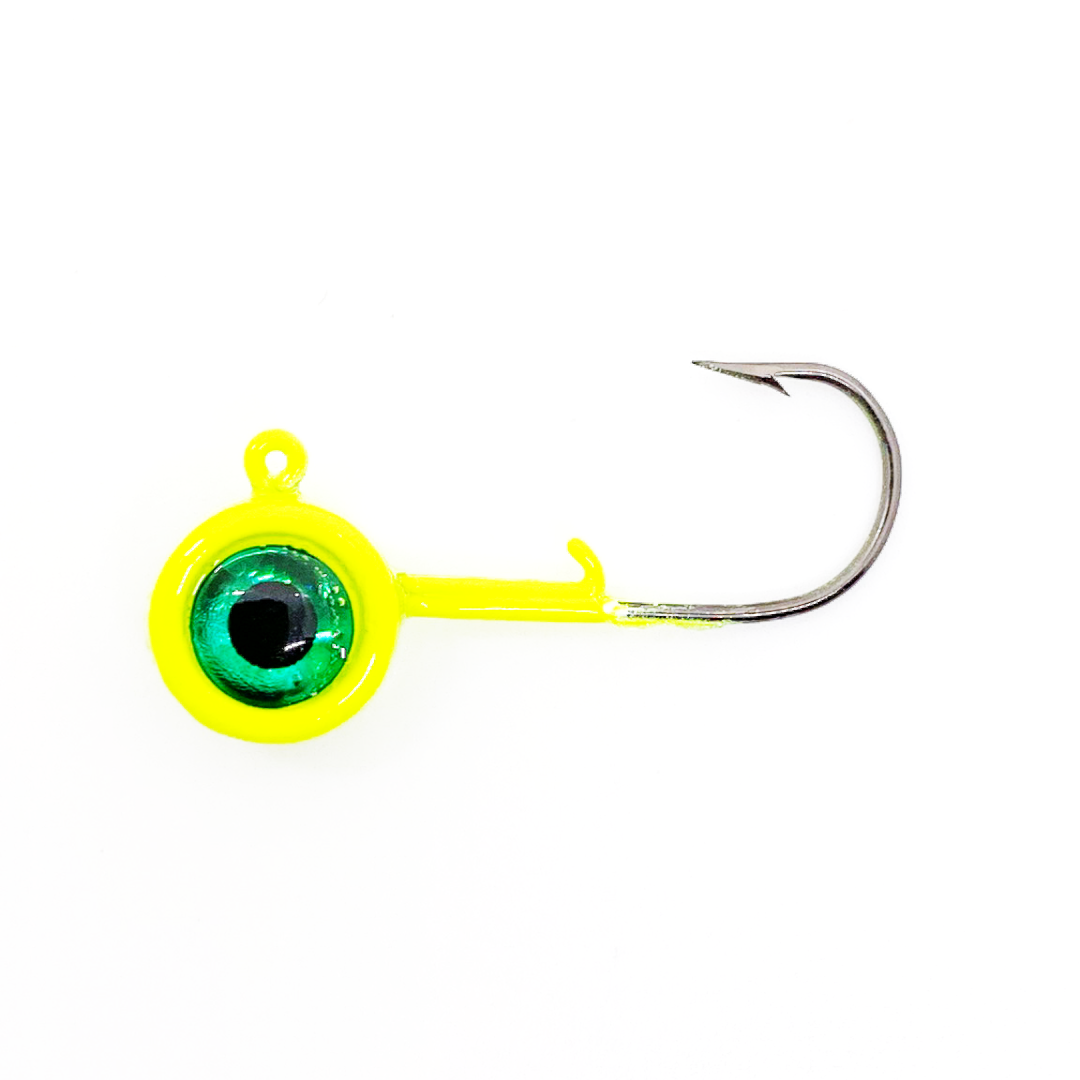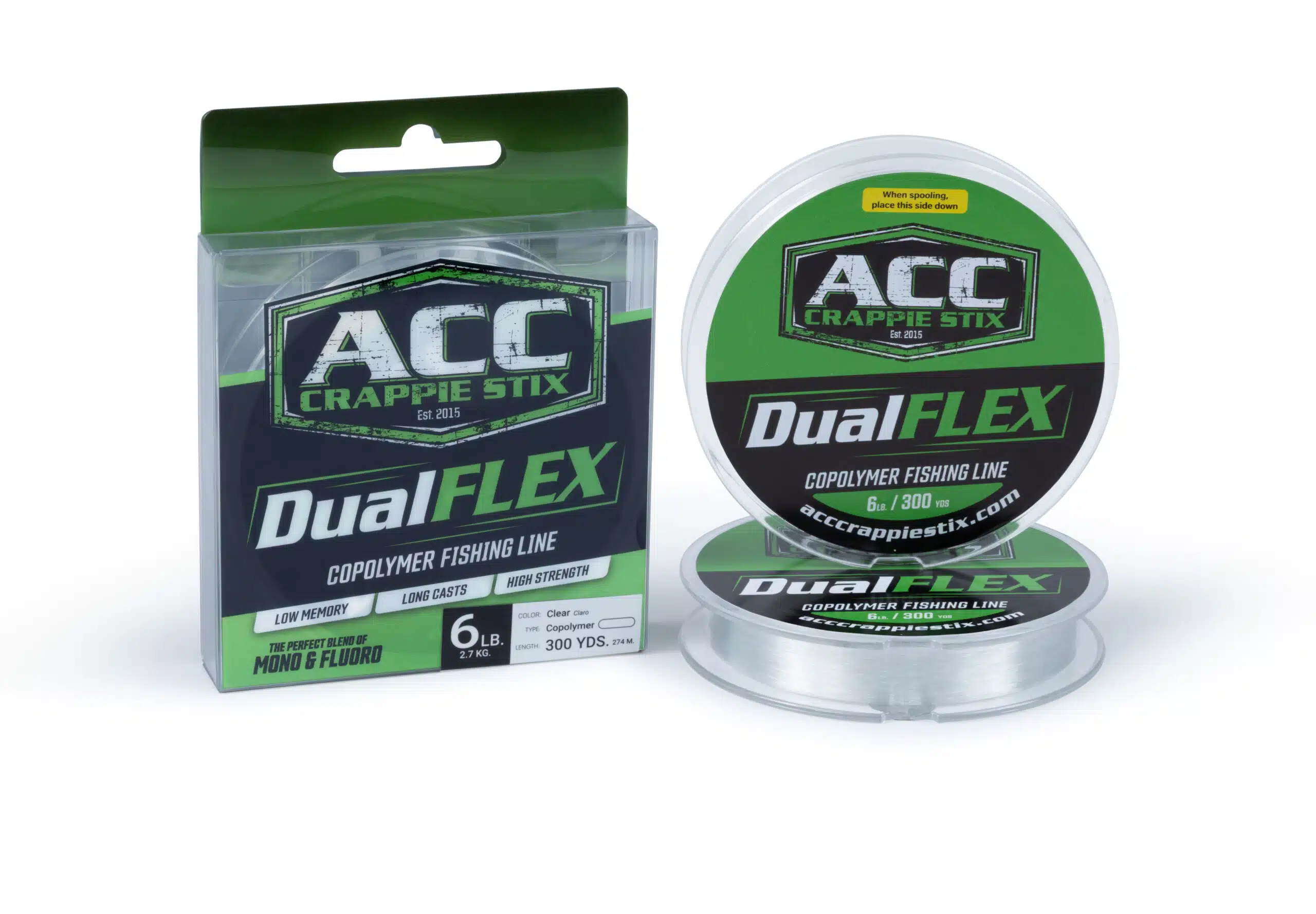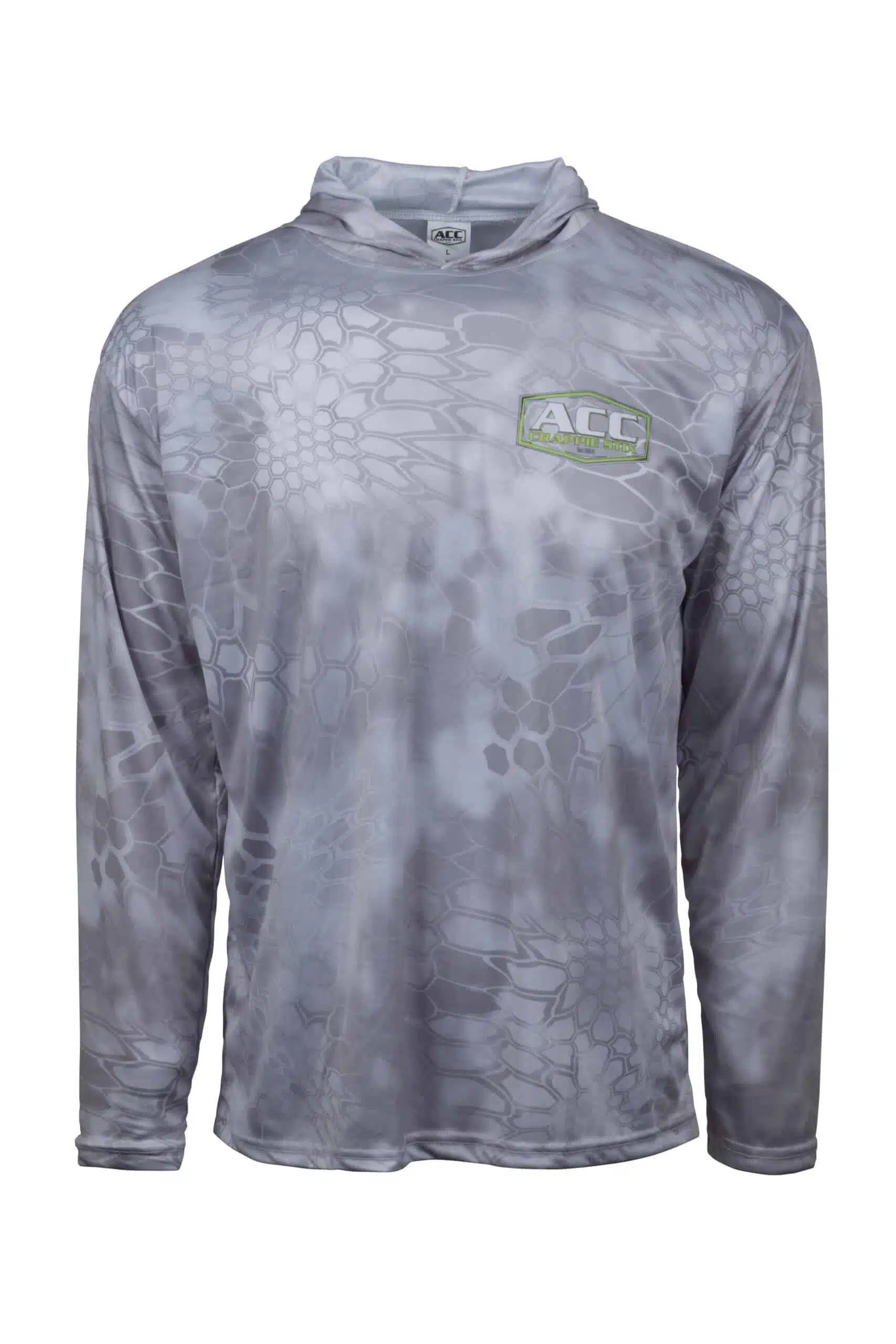Pre-spawn crappie: Unlocking the bite
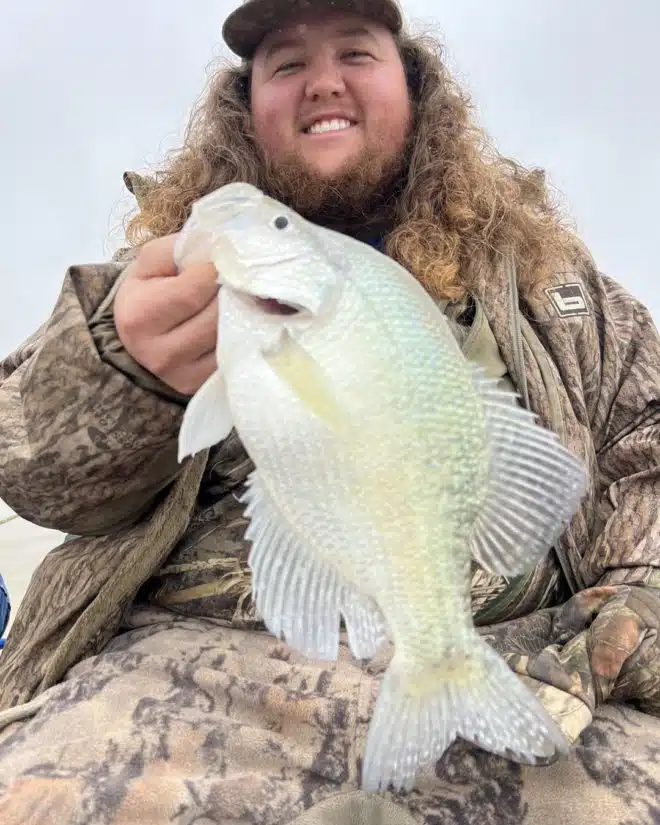
By Greg McCain
The pre-spawn period offers a myriad of possibilities for crappie fishermen. The timing covers the country like a wave, spreading in the winter months across the South and rolling through late spring in the northern U.S. and Canada.
We covered part of the pre-spawn equation in an earlier blog post with ideas from the pro staff about locating crappie at this time of year. Today, in the second part, pro staffers break down both the best techniques and presentations to catch pre-spawn crappie and the ideal ACC equipment to get the job done.
When approached about how to catch crappie in the pre-spawn window, various pro staffers volunteered information about the finicky nature of fish as they near the spawning period. Charlie Burrow (GO FISH with Charlie Burrow on YouTube) almost always responds with vivid language about his crappie-fishing adventures in Louisiana and east Texas.
Charlie contends with the moody personalities of “consistently inconsistent crappie” in the pre-spawn.
Keith Acker fishes some of the same waters as Charlie and puts his own unique twist on the fussy nature of fish staging to spawn, especially the females.
“I’ll drop down on them and have a 2½-lb. fish run at the sight of a jig,” Keith said. “It’s like they are scared to death. Or they will run up there and hit it with everything they’ve got. Or they just sit there, and I can bounce it off of them and they will ignore it, just not hit it. It’s basically the month before the spawn is the only time I see that happen. It’s a distinctly different personality trait.”

So how do the best fishermen unlock the pre-spawn bite? The best answer: some patience and perseverance and the right approach and equipment.
“The pre-spawn is a fun time of the year to fish as long as you have patience,” Keith said. “The big girls are very hormonal and will react distinctly differently during this time period
Depending on the mood of the fish on a certain day, Keith (friend him on Facebook for fishing reports and other info) takes a couple of different approaches in the pre-spawn. If the fish are spooky, he avoids pressuring them, pinpoints targets from a distance of 20 feet or more, and casts with a 6’6” ACC rod.
The one-piece models, available in both 6’ and 6’6”, have been highly popular since their introduction last year, but the original two-piece casting/dock shooting rods still prove productive as well. They come in various lengths.
If the crappie are less spooky, Keith deploys one of the ACC jigging poles and pendulums the bait to the fish or drops a jig vertically on them.
“I use the 11’, 12’, or 13’ ACC Crappie Stix with mid-grip when they aren’t as finicky so I can hold it on their nose,” Keith said. “
His bait of choice is an adaption of the lures available from ACC, which include both jig heads and plastics like the ACC Crappie Snax, which come in two sizes. They are the 2½” “The Club” or the larger “The Shank.”
“My favorite bait of choice is the 3/16 oz. ACC Jig Heads that I turn into hair jigs,” Keith said. “I’m not sure if it’s the big eye or the larger profile or the combination of both, but they react more aggressively to these baits than any other that I’ve tried.”
Charlie extends the advice about dealing with spooky fish. He doesn’t cast to them but finds that his long ACC jigging pole reaches most crappie.
“If they are spooky and fleeing at 20-30 feet, try a stealthy approach and a slow descent with your jig,” he said. “Don’t expect a quick bite and don’t be surprised if he stares at your offering for several seconds. This is where my ACC 12’ rear-seat really shows off!
“Lastly, when vertical jigging with Livescope, I will stop the jig just above his nose, and once he begins to move towards my bait, I will take it away, keeping it just out of his reach. Many times they will follow your bait and not take it until it nearly reaches the surface.”
Following are more effective ideas about catching pre-spawn crappie from other members of the ACC pro staff:
Tim Howell, Mississippi (Follow Long Branch Guide Service LLC on Facebook for guided trip information.)
For spider rigging, “I use (a spead of eight) 16’ ACC trolling rods rigged with two 3/16 jig heads paired with ‘The Club.’ I’m looking for the big females that are staging up getting ready to run up shallow.
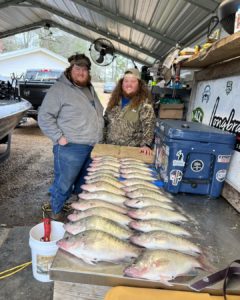
“Pre-spawn, they are more lethargic and want a very slow, almost dead, presentation. I want it dead on their nose. As the water warms and clears up, they get more active and will start chasing the bait more.”
Jody Stephens, Georgia (Follow Crappie Daze Guide Service on Facebook for guide trip information.)
“Long-line trolling is my preferred method to catch these fish! Depth, color, speed … all a factor! (I troll) dark-color jigs with bright chartreuse tails, which work well in stained water.
“Mix it up. You’ll get on ‘em. Target your trolling speed and weights to get it in the zone, .8-1.0 mph.”
Jody uses a spread of ACC rods for long lining. From the front, he staggers 16’ and 12’ ACC rods from either side of the front of the boat and uses six 8’ rods across the bank, covering a 40’ path as he trolls.
Jonathan Phillips, Alabama (Follow Team Phillips Guide Service on Facebook for guided trip information.)
“Most fish I target are free ranging and not particularly relating to structure most days. A long pole (16’ ACC) and a 16th or 8th ACC jig head are the norm for my tackle set up.”
Daniel Ellis, Tennessee (Friend him on Facebook for fishing reports and other info.)
“A lot of them right now are in that 15’ to 30’ where we solely single pole fish for them over structure, using a 12’ and 13’ ACC Crossover rigged with 10# braided K9 on the main line with a 1/4 oz. weight tied to a small Crain Swivel with 8- to 10-lb. flouro K9 tied to our jig.
“As they move back, we switch gears a little and pull all the ACCs out and (long line) roadrunners over flats and stump fields leading into the spawning areas. I use 8’, 10’, 12’, and 16’’ ACC rods rigged with 8- to 10-lb. flouro rigged with 1/8 and 1/4 roadrunners, pulling at .7 to 1.3 mph in 4’ to 12’ of water.”
Jeff Jowers, Alabama (Follow Southern Scale’s Guide Service on Facebook for trip information along the Coosa River.)
“The tactic I use is casting. The equipment is the 6’6″ one-piece ACC rod rigged with the ACC 1/8th oz jig head. The backup rod is the 7’6″ rigged with the 3/16 oz jig head, both laced up with “The Shank,” color depending on the lake and water color.”
Chris Sarge Gill, Texas (Follow Asleep at the Reel on YouTube.)
“I use the 12’ ACC mid- and rear-seat at this point for vertical jigging. The rear seat is a great rod when they get a little spooky as you have almost an extra foot to play with. The new ACC bait “The Shank” in Pear Juice is a great bait to use during this stage of fishing. It is not too big and not too small either to vertical jig or to pitch out past the tree when they want movement.
“During the spawn, however, the staging females will eat almost anything, so any color usually works.”
Goose Gutzman, Minnesota (Friend him on Facebook for fishing reports and trip information with Goose’s Guide Service.)
“I use an ‘Ajusta Bubble’ bobber with 4-lb. mono and a 5mm or 4mm jig by Crystaleyes Fishing ‘Aura’ and visually look for the greenest weeds or fan cast areas until making contact with a crappie. Typically if you find one, there’s usually a whole bunch there.
“I run an 8’ to 12’ ACC Crappie Stix, and the reason I prefer long poles … when it’s windy out, I can get a way quicker hook set and (the longer rod) helps me cast farther as well as to not spook them.
“I use plastics that are from 1” to 1.5” long because they are feeding, but I’m matching the leeches, small minnows, blood worms, and freshwater shrimp.
“As the water warms up to 52 degrees, I’ll up my plastics to 2 to 2.5 inches because they are getting hungrier and more aggressive. Eventually they will move into their typical spawning grounds, the males are getting the beds ready, and soon the Females will move in. The technique is pretty simple, either a minnow on a Wally Marshal red long shank hook or a 1/32 oz. ACC Crappie Stix jig with a AtX 2” plastic or a Baby Rockfish by LuckyJohn USA …”
Don McClish, Oklahoma (Follow PointBreak Crappie Guide Service on Facebook for guided trip information.)
“I’ll start working the spawn areas when the water temp hits the mid 50’s and spider rigging with 14′ (ACC rods) is one way to get in on some hot and heavy action. In any of the above-mentioned spawning areas regardless of the water depth, I’ll set my rods at the depth of 2’, 4’, 6’, 8’ because in some of these areas the fish I fish for may be suspended shallow in 30′ of water in the channel and only travel a 100′ foot or so to spawn …
“Now, if I’m concentrating on the main-lake pockets with a average depth of 8′, one of my favorite and more relaxing ways is to anchor down near the bank and cast out double minnow slip cork rigs that consist of a bell sinker on bottom with hooks about 2′ apart.”
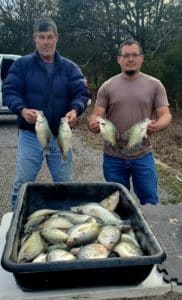
Justin Smart, Louisiana (Friend Justin on Facebook for reports and other fishing information.)
“The pre-spawn to me is a time of year when every bait combination can come into play. I still really like the natural colors, but every now and then oranges and chartreauses can be hot! I typically try to match my bait with water color, greys and translucent baits in clean water, brighter baits in stained or dirty water. I will target them with a 7’ ACC casting rod or a 13’ ACC super grip for long poling.”
Jared Gilbert, Alabama (Friend Jared on Facebook for fishing reports and other info from the Coosa and Alabama rivers.)
“I like casting a 6’6”, and my bait color depends on water clarity. As far as presentation, I just try to keep the bait in front of their face and right above their nose for as long as I can until I get a reaction.”
Charlie Burrow sums up the potential for catching fish in the pre-spawn stage.
“Crappie are a unique sport fish, as they can be taken by several different techniques,” he said. “Whether you spider rig, cast, shoot docks, wade, or my favorite, long-sticking crappie, (the various techniques} offer opportunities for all.
“My best advice: What worked yesterday may not work today. Heck, what worked this morning may not work this afternoon. Be prepared to change and adjust with the consistently inconsistent crappie.”

